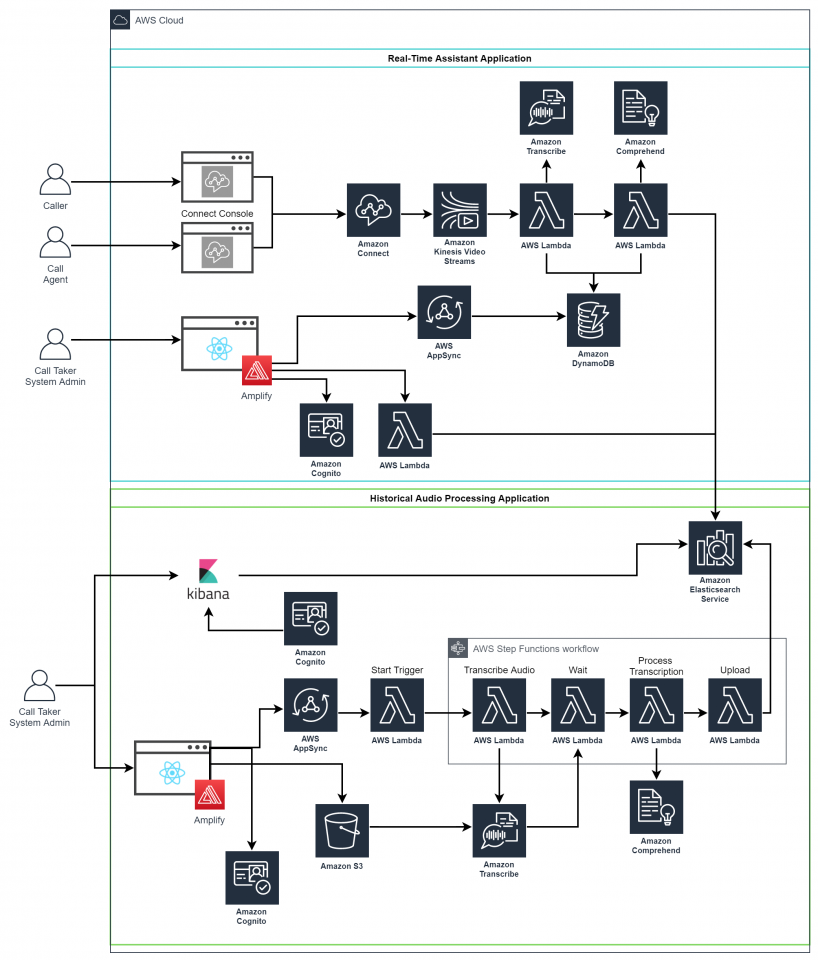Virtual Assistant Tool: E-Comm Connect
E-Comm Connect is a virtual assistant tool that provides real-time recommendations to call takers, enabling them to be more efficient and engaged when taking non-emergency calls from the public.
Overview
The UBC CIC worked with E-Comm 9-1-1 to create a prototype that demonstrates a Virtual Assistant solution for use by police call takers when answering non-emergency calls. E-Comm Connect demonstrates how the tool could benefit call takers by providing recommendations on which Standard Operating Procedure (SOP) to reference when they are helping callers, helping expedite this process by allowing the call taker to quickly find the relevant SOP for the police agency of jurisdiction. E-Comm Connect further assists the call taker by suggesting related SOPs that might be relevant to the caller’s situation.
Problem
When a non-emergency call is received, call takers actively listen to gather key information from the caller about the event that has occurred. This information allows the call taker to select and execute one of more than a thousand unique agency policies to help the caller. Applying automation to the process of selecting and deploying the correct SOP reduces the cognitive load on the call taker, helping them be confident in their decision so they can continue to focus their attention on obtaining accurate information from the caller.
Approach
To build the E-Comm Connect tool, a database of representative simulated audio recordings was created using input from E-Comm call takers. Next came further processing to transcribe the call audio into text, remove sensitive or irrelevant information and to associate the audio transcript to the applicable SOP. Using this tool and the database of representative calls, E-Comm Connect can process audio in real time, extract keywords to be searched and suggest a prioritized list of the most relevant SOPs that could be used. The call taker can also influence the SOP suggestion by typing sentences into the tool related to the event they are dealing with.
Link to the GitHub repo for Part 1 of the solution: Call Center Historical Audio Processing application: https://github.com/UBC-CIC/call-center-historical-audio-processing
Link to the GitHub repo for Part 2 of the solution: Call Center Real-time Assistant application: https://github.com/UBC-CIC/call-center-real-time-assistant
Supporting Artifacts
During the Innovation Workshop, a fictional Press Release and nonfictional Frequently Asked Questions are drafted. These are tools used to define the solution and why it matters to the customer.
Architecture Diagram

Press Release
FAQs
*As this is still a prototype, these are the FAQs we anticipate will come up once the tool is released. A fictional PR and FAQ section are both used as an important part of the design process.
Customer FAQs
What if I follow what the software tells me but it’s incorrect?
If the call taker does not see the SOP that they would like to deploy in the recommendation list, they have the opportunity to go back in their system and select the SOP that they would like to deploy. There will be an option in the application for call takers to provide feedback.
How can I trust that the assistant is giving me the right information?
The system is no different from asking a colleague for information. Users still need to rely on their training and are ultimately responsible to make sure the guidance provided is appropriate for the situation.
What do I do if I feel the assistant is not giving me the right information – can I override it?
You can ignore the guidance offered by the assistant and provide feedback that the information provided is not correct. The system relies on feedback from users to improve the accuracy of its recommendations.
Will it be able to keep up with the changes? For example the police may make changes on the policies – will this be updated?
There will be a process to add/change/delete the information from the system.
How does the application learn?
The application is able to improve the accuracy of its recommendations when new audio recordings and keywords are added to its database and as new SOPs are added.
Who do I talk to if I run into issues? Tech support?
The primary group supporting the application and its users is the E-Comm Policy, Support and Implementation (PSI) group, which is responsible for the ongoing maintenance of Standard Operating Procedures and operational policies. The PSI team has been trained on how to administer the call database and “tune” application so that its effectiveness improves over time. Technical support is provided by the E-Comm Technology Services team, through the Service Desk.
Will this work after a natural disaster? What is the robustness of this system? Ie. earthquake. How much failure can we endure before this might be rendered useless?
The solution is based on AWS cloud computing resources housed in its Canadian data centres. As long as E-Comm has internet connectivity, the solution will be available.
What if the software isn’t working? Are call takers trained to go without the software if needed? Will call takers become too dependent/reliant on the software?
The system is not intended to replace the expertise and extensive training of call takers. Other support tools, including the existing E-OPPS database will continue to be available to support call takers in the event that E-Comm Connect is unavailable.
Will we lose jobs to this?
No. It will allow you to better focus on supporting the caller.
What are the limitations of the system?
The system is only able to provide guidance on call types for which example call audio and keywords have been provided. The set of call types is expected to expand over time as E-Comm gains more experience with use of the tool.
How does E-Comm ensure information I provide is being kept confidential, is my privacy under threat by having an automated system listen to my call?
The system only contains information that relates SOPs to the keywords that callers would use within calls of that type. The system does not store private or confidential information.
What are the associated numbers impacted?
Where did historical calls come from. How were they used?
Audio recordings of simulated calls were used to generate transcripts.
Stakeholder FAQs (Trainers, E-Comm 9-1-1 business, General Public etc.)
Why is E-Comm 9-1-1 using automation instead of real people?
No individuals are going to be replaced by the tool. The tool is simply meant to assist them.
What happens if the virtual assistant needs to be redirected?
Where is the data for the virtual assistant coming from?
The virtual assistant is pre-trained on enacted calls (provided by Ecomm911) where the call taker follows the correct SOP for a specific situation. Using the feedback system, the Assistant data may be further polished by adding new real call data with all personally identifiable information redacted.
Will this increase the surveillance on my calls?/ Will there be analytics on the calls/use of the virtual assistant?
There is no additional surveillance aside from extracting keywords in the call transcript to map an SOP to it. The analytics for the proof-of-concept app only include the accuracy with which it can predict an SOP for a given set of keywords
How will the Virtual Assistant adapt as it stays in use?
There will only be changes to the dataset the Assistant uses to predict the SOP, mainly making sure it is a well balanced dataset whose recommendation accuracy improves and stays reliable
How do we ensure callers’ information is kept confidential?
Personally Identifiable Information is redacted when processing the call audio.
Who decides who is making the decision on keywords?
The keywords are chosen by the virtual assistant based on probability from previous calls. As mentioned before, the call taker can override the VA at any time.
Why are you investing in this tool instead of hiring new staff?
The problem is not a lack of staff, it regards the tasks that staff are required to undertake
Will this increase the surveillance on my calls?/ Will there be analytics on the calls/use of the virtual assistant?
Do I have to use the virtual assistant?
Certainly not.
What difference will I see, as a caller, when this VA is implemented?
The caller experience should not differ.
About the University of British Columbia Cloud Innovation Centre (UBC CIC)
The UBC CIC is a public-private collaboration between UBC and Amazon Web Services (AWS). A CIC identifies digital transformation challenges, the problems or opportunities that matter to the community, and provides subject matter expertise and CIC leadership.
Using Amazon’s innovation methodology, dedicated UBC and AWS CIC staff work with students, staff and faculty, as well as community, government or not-for-profit organizations to define challenges, to engage with subject matter experts, to identify a solution, and to build a Proof of Concept (PoC). Through co-op and work-integrated learning, students also have an opportunity to learn new skills which they will later be able to apply in the workforce.

